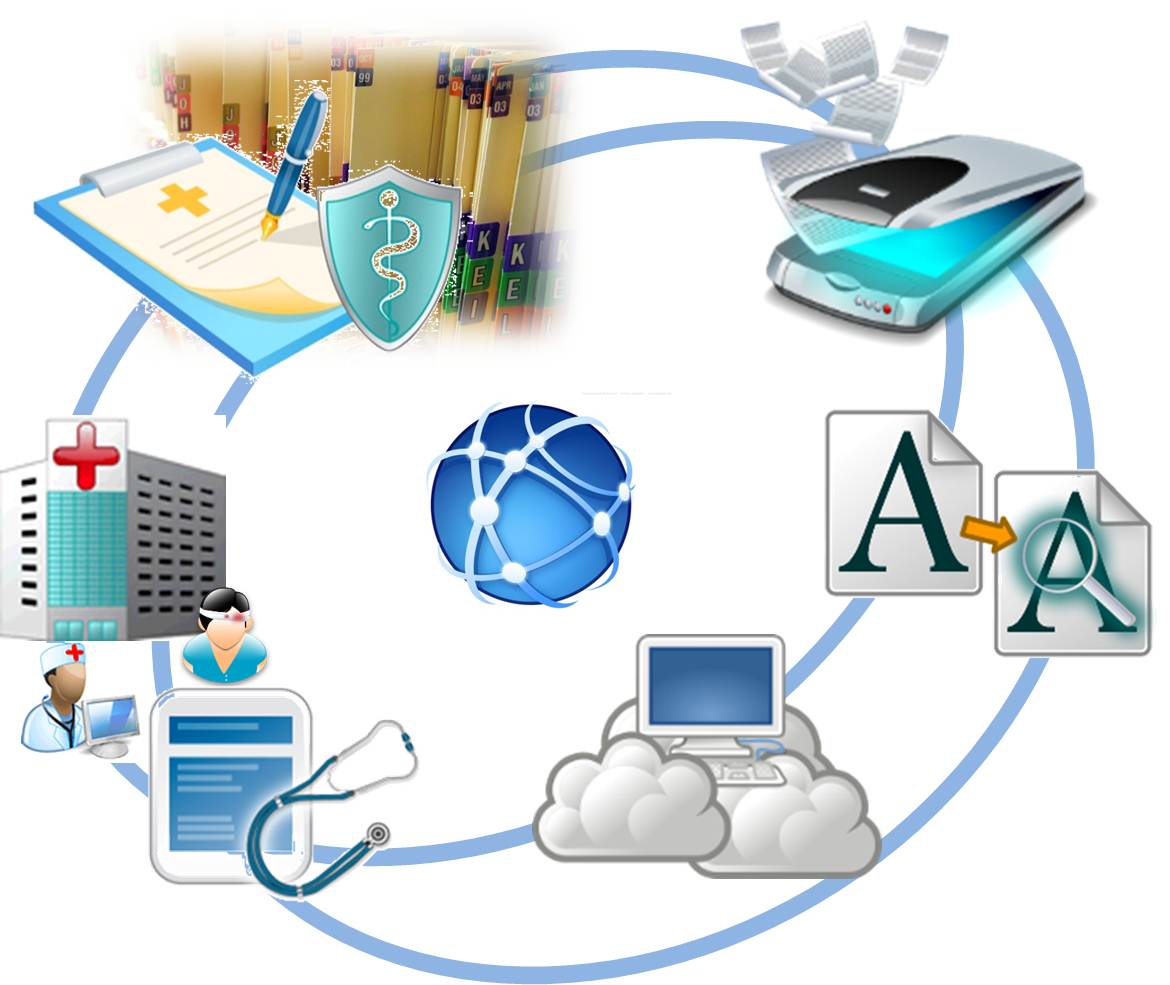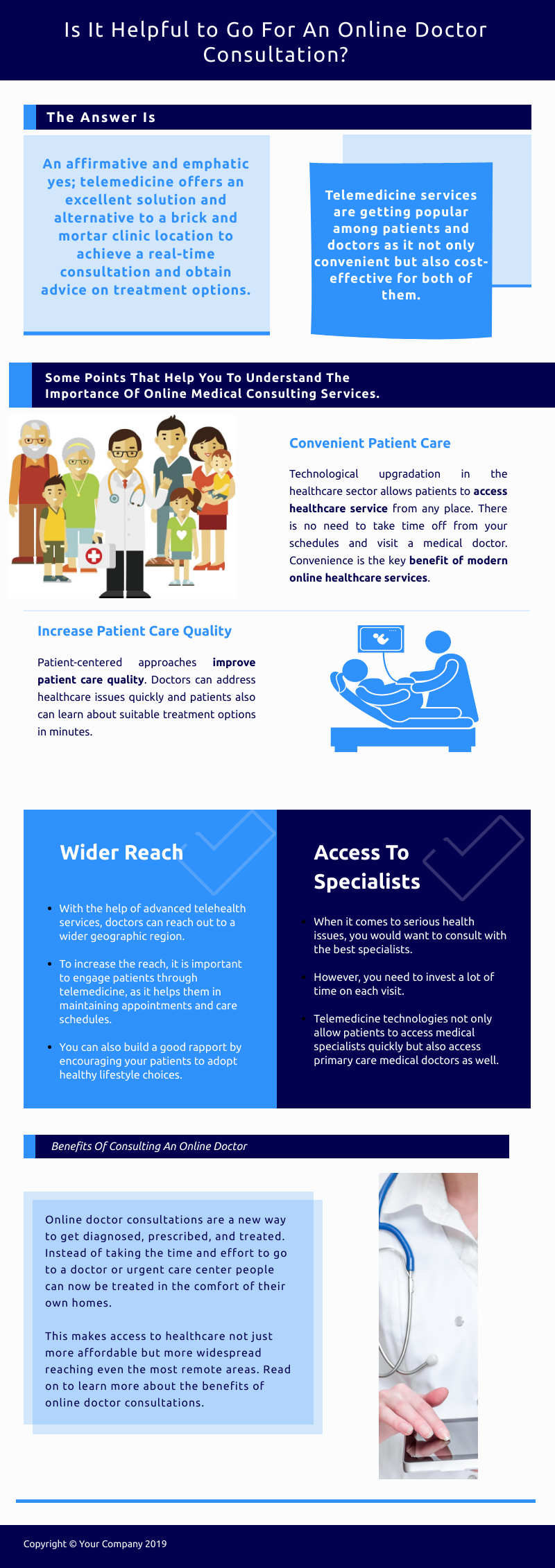The Ultimate Telemedicine Guide | What Is Telemedicine?
Telehealth is a fairly new idea, and it is increasing at the speed of light in the field of the Internet. This report from Reliefseeker is meant for those who want to know all the complexities of the highly fascinating and dynamic field.
- Telemedicine Story
- Telemedicine Today
- Telemedicine and Telehealth difference
- Telemedicine Advantages and Disadvantages.
- The perfect Telemedicine medical specialties.
Read also: 7 Foods That Won’t Be Eaten By The Experts
History of telemedicine
Since its inception, the world of telemedicine has changed radically. Several hospitals had started experimenting with telemedicine only about 50 years ago to treat patients in remote locations. However, telemedicine has become a highly interactive technology used in hospitals, workplaces, private doctor’s offices, and other healthcare settings with rapid technological change in the past two decades.
The idea of telemedicine started with the advent of telecommunications technology, the way electromagnetic signals relay information spatially. The earliest forms of telecommunication technology included telegraph, radio, and telephone. Radio and telephone were just starting to appear as viable communication devices by the end of the 19th century. Alexander Graham Bell invented the handset in 1876, and Heinrich Rudolf Hertz made the first radio broadcast in 1887.
But it wasn’t until the turn of the 20th century that the general public started using these innovations and believed they could be applied to the medical field. In 1925, a cover illustration from the Science and Invention magazine illustrated Dr. Hugo Gernsback’s unusual device, known as the “teledactyl“. The futuristic machine would use tiny robot fingers and radio technology to examine a patient from afar and show the doctor an individual’s video stream. While this innovation never went past the stage of the idea, it has called for the desired concept of telemedicine that we are all aware of; a remote video consultation between doctor and patient.
Several decades later, in the 1950s, two hospital systems and university medical centers were experimenting with how the telemedicine idea can be applied. Medical workers at two health centers in Pennsylvania, about 24 miles apart, transmitted X-ray images over the cell. A Canadian doctor incorporated this technology into a teleradiology program that was used in and around Montreal throughout the 1950s. Then, in 1959, doctors at the University of Nebraska effectively broadcast neurological tests using interactive two-TV to medical students around the campus. They developed a telemedicine liaison in 1964 which allowed them to have health services at Norfolk State Hospital, 112 miles away from campus.
The system was originally developed by carers to meet remote patients living in rural areas. However, over time, medical staff and the US government have seen a broader picture: the opportunity to meet underserved urban residents and respond to medical emergencies by exchanging medical consultations quickly and Health records for patients.
In the 1960s, major US government expenditures, including the Department of Public Health, NASA, the Defense Department, and the Department of Humanities and Health, spurred telemedicine research and innovation. During seizures, the sending of heart rates started about this time. For example, in Miami, the university medical center partnered with the fire rescue service by transmitting heart rate signals to voice radio stations from rescue websites.
A highly popular telemedicine initiative sponsored by the government named space technology applied to specialized medical care in rural Papago (STARPAHC), and it was a partnership between NASA and the Indian health services. The program has provided remote health care for Native Americans living at Papago Reservation in Arizona and for astronauts in space! Projects such as STARPAHC promoted innovation in medical technologies and helped to accelerate the advances in telemedicine. In the next few decades, continuous developments in telemedicine and broader studies were seen in hospitals, medical institutions, and academic firms.
Read also: Top Secrets To Staying Productive And In Control
Telemedicine today
As the telemedicine market is growing faster than ever before. When technology progresses to unprecedented levels, so does universal accessibility to simple telemedicine devices and accessibility to them. For example, we now not only have the live video telemedicine technology, but most of the American population has experience with online video chat apps (such as Skype or Facetime), and access to a computer or mobile device to use them.
Initially, telemedicine was developed as a way to treat patients who were located in rural areas, away from local health services or in places where medical providers were not present. While telemedicine is still being used to treat these problems today, it is increasingly becoming a realistic tool in healthcare. The linked patient today needs to spend less time in the doctor’s waiting room and get prompt treatment when they want it for small yet urgent problems.
Combined with the unavailability of many overworked healthcare professionals (particularly primary care providers), this expectation of more effective treatment has led to the growth of telemedicine companies. Some give patients access to medical care 24/7 with an on-call doctor hired by this organization. Others give additional clinical personnel and experts access to hospitals and large health care facilities to outsource particular cases (a common model among teleradiology companies). Others provide a telemedicine platform that can be used by doctors to give interactive tours of their patients themselves. Telemedicine is gradually becoming a way of giving medical clinics an edge in a dynamic health world where it’s hard to stay autonomous or preserve a stable outcome.
Telemedicine development is also impacting the growing mobile health market. Patients are beginning to use technology to track and monitor their health with a large range of cellular health apps and modern easy-to-use handheld medical devices. Simple home medical devices that can take vital signs and diagnose ear infections, monitor glucose levels or measure blood pressure allow patients to obtain the medical details they need without having to go to the hospital. Doctors can gain more freedom as more and more patients continue to use technology to monitor their wellbeing, thanks to telemedicine they will also be exposed to other ways of seeking treatment.

Difference between telemedicine and telehealth
As the interdependent fields of cellular health, digital health, health informatics, and telemedicine are continuously changing with new technologies, a description of these words is often hard to establish. The terms “telehealth” and “telemedicine” are also used interchangeably across most of the medical industry. Also, they are considered synonymous terms by even the ATA. It is not surprising, because the concepts of telehealth and telemedicine include very similar facilities, in particular: medical education, electronic health patient tracking, patient consultation videoconferencing, wireless health apps, medical image report transmission and much more.
Yet if you want to be a doctor, telemedicine is a Telehealth feature. While telehealth is a general concept that incorporates all health services delivered using telecommunications technology, telemedicine applies to clinical services in particular. There is a manner in which the California Telehealth Resource Center describes telehealth: “Telehealth is a range of methods or means for enhancing the delivery and support of information in health care, public health and well-being using telecommunications technologies.” Telehealth may include more general health services, such as public health services, while telemedicine is a special type of telehealth.
Read also: Build Muscle with These EveryDay Tips
Here are just a few short examples
- Telehealth: A public health device alerting the public of an outbreak of disease. A medical education video-conferencing site.
- Telemedicine: A smartphone application that allows doctors to treat their patients remotely via video chat. A software solution that allows primary care providers to send rash or rash images to a dermatologist at another location for easy diagnosis. As the telehealth market continues to expand and improve, these conditions are expected to include more health services. To better grasp the differences, register for a telemedicine demo.
Telemedicine advantages and disadvantages
Telemedicine is an obvious advantage in most cases. It is increasing access to quality healthcare, especially in underserved areas and communities most in need. It provides a way to reduce healthcare costs and get interested in the linked citizen of today. You have the potential to make positive improvements to the healthcare delivery model.
Yet telemedicine also has some drawbacks
Due to the complexity of its interactive interface, and due to the social and technical obstacles that could shift in the future. The great news is that we are likely to discover with the increasing prevalence and widespread acceptance of telemedicine that the drawbacks of telemedicine overcome on their own. With new developments in technology and the evolving policy that increasingly supports telemedicine, we are constantly searching for ways to develop telemedicine and make it a viable, if not beneficial, the form of healthcare delivery for many circumstances. Doctor Here is a short overview of the key benefits and drawbacks of telemedicine: Experts in telemedicine More efficient and affordable medical treatment.
Read also: Top Negative Impact of Technology on Human Society
The guiding force behind the area of telemedicine is the most open and realistic medical treatment for patients. Telemedicine was originally developed as a means of addressing health care shortages in the United States, particularly in remote rural areas. Telemedicine is now used internationally, either to provide basic medical care in third world countries or to enable an elderly patient to contact the doctor at home with mobility issues. Telemedicine has the ability not only to knock down traditional regional barriers to access care but also to establish a more patient-specific model of healthcare.
The US spends more than $2.9 billion a year on health care, more than any other developed country. In comparison, around $200 billion of these expenditures can be avoided, and needless expenses. Telemedicine can reduce our healthcare costs by reducing issues such as prescription non-compliance and excessive emergency room visits, and by making average doctor visits more effective.
Extends access to specialist consultations
A medical center or hospital network can increase access to qualified medical professionals rapidly through telemedicine. This helps primary care physicians to consult medical experts about a particular case and patients, regardless of location, to find an appropriate specialist in a rare type of cancer. Small hospitals without adequate radiology personnel can outsource evaluation of X-ray telemedicine yet another example.

Increase patient participation
The patient today lives in an increasingly linked environment and anticipates a new form of experience with treatment. Telemedicine concerns patients by allowing them, realistically, to communicate with their doctor more frequently. That means more questions and answers, a better doctor-patient relationship, and patients feeling empowered to control their treatment.
Higher quality patient care: Telemedicine makes it easier for clinicians to monitor patients and ensure everything goes well. If they use a broader remote patient monitoring device to show the heart of the patient, or video chat to answer drug questions after hospital discharge, telemedicine leads to improved outcomes for patients.
Watch out for the drawbacks Advanced training and equipment is required:
Telemedicine systems, like all technology solutions, typically require training and buying equipment. The solution dictates how much: A bigger telemedicine hospital platform to be used by GPs and the consulting specialist entails further training and the procurement of a telemedicine cart and other cellular health tools. A secure video chat device such as eVisit needs substantially less staff training, and usually requires only a webcam purchase.
Read also: Internet: A networking bond or a disconnection from reality
Some models of telemedicine can minimize the quality of service
telemedicine companies serving patients provide the great value of patient care on demand. A sick patient can only go for treatment online and order a ride with one of the doctors in the telemedicine service. Yet this model, somewhat close to the modern lifestyle trend, brings about a split in treatment continuity. A random doctor unfamiliar with the patient doesn’t completely understand his medical background.
This may minimize face-to-face encounters with doctors: Many opponents say that online telemedicine experiences are impartial and that a full diagnosis still involves physical examinations. As more people use online experiences rather than in-person visits, what is the effect of that?
Doctor-patient visits in-person are, of course, important and necessary under several circumstances. Telemedicine is often used to complement such appointments, to make clear patient notes, and to ensure that all is going well. A personal consultation with an existing patient is often not required for minor, serious conditions (such as infections). Telemedicine will save time and money for the patient, doctor, and health-care system in these cases.
It can be difficult to manage the evolving policy and reimbursement environment Reimbursement of telemedicine is a difficult matter, particularly with ever-changing state policies. Most states already have parity regulations that allow private payers to reimburse visits to telemedicine in precisely the same way as visits in-person. The easiest way to do the deal is by contacting the favorite payers and asking for their programs. You may also refer to our telemedicine reimbursement guide and this useful state-policy ATA chart.
It’s also important to note that many doctors who use telemedicine would charge individual fees for convenience ranging from $35 to $125 per flight. Such expenses are direct to the person and are applied through a payer to (or superseded to) any refund. Although this means patients are paying out of pocket, many eVisit consumers have noticed that they don’t matter, and are simply happy to pay the added benefit expense.
-
Telemedicine’s core medical specialties
Telemedicine is used in many different medical areas, in emergency environments, and hospitals. Nearly all medical fields are useful for remote consultation with a patient or other provider (usually a professional). Because of the lack of care, limited access to experts in certain fields, and remote locations of individuals (especially in rural or sparsely populated areas), telemedicine is extremely helpful for any caregiver who attempts to expand access to quality patient care.
Some medical specialties were the first to adopt telemedicine and led to solutions being developed specifically for their specialization. There are plenty of telemedicine specialties on the market for this reason. Here are some of the most common telemedicine solution specialties: Teleradiology: since the 1960s Teleradiology has been among the earliest telemedicine fields. Solutions in teleradiology were developed to increase access to X-ray diagnostics. Large U.S. hospitals don’t always have a radiologist or you don’t have access to a 24-hour facility. That means patients who come to the emergency room can have to wait for the diagnosis, particularly during peak hours. Teleradiology applications also provide on-site providers to securely transfer X-rays and medical records to a professional radiologist somewhere and get a quick rundown of the patient’s condition.
Telepsychiatry: Telepsychiatry allows qualified psychiatrists to provide patients with treatment through increased access to behavioral health care services. Telepsychiatry is increasingly common, due in part to the lack of accessible psychiatrists nationally, and because psychiatry also does not require similar physical exams in the field of health.
Teledermatology: Teledermatology solutions are also storage and relay technologies that allow a global health care provider to provide a patient photograph of a particular skin rash, mole or abnormality, for remote diagnosis as providers of primary care professionals are often the first health care professionals to see a potential problem. Teledermatology solutions allow PCPs to continue managing a patient’s treatment and providing a fast response if further evaluation is needed by a dermatologist.
Teleophthalmology: Teleophthalmology solutions allow ophthalmologists to examine the eyes of patients, or remotely test remedies. An ophthalmologist who detects and treats an eye infection is one typical example. Such options are also live or delayed by telemedicine.
Telenephrology: Telenephrology is distance-exercised nephrology. Telenephrology approaches are most commonly used by clinicians when a family physician may consult a nephrologist about a kidney-ill patient.
Tele-obstetrics: Tele-obstetrics offers remote delivery of prenatal treatment to obstetricians. For example, that might mean recording a baby’s heart in one place and sending it to an obstetrician at another facility of identification.
Telemedicine A Clear Infographics to Understanding what is All About

Author Bio:
Jebby is the author of the site Reliefseeker which is about online health and medicine. Usually, people will have an emergency to get medicine. She tries a lot to make such a situation easy and created an online pharmacy. Here she comes with lots of stuff about TeleHealth, Online doctor, Online prescription, Prescription delivery, and ways to get medication online.
Thank you for reading this post, sharing is caring, please do share this post with your friends and don’t forget to like us on Facebook, Twitter, Instagram, YouTube and other social network channels for regular update.






Comments are closed.